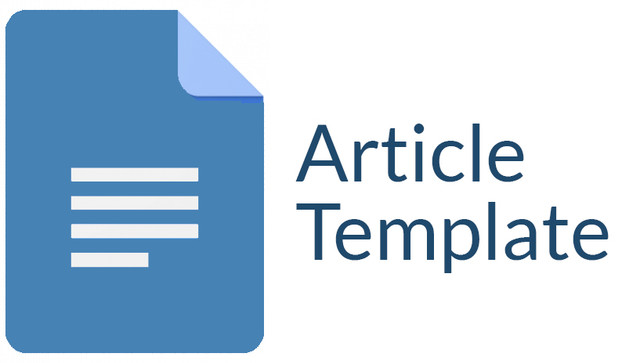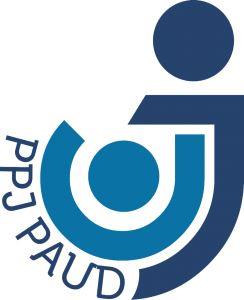Efektivitas Kolase Dengan Paper Quilling Terhadap Motorik Halus Anak Di Taman Kanak-Kanak Pelita Bunda Kabupaten Solok
DOI:
https://doi.org/10.30736/jce.v7i1.1389Keywords:
Motorik Halus, Kolase, Paper Quilling,Abstract
Minimnya variasi media dan kegiatan yang dimanfaatkan untuk melatih motorik halus di TK Pelita Bunda Kabupaten Solok menjadi pendorong dilakukannya penelitian ini. Tujuan dari penelitian ini adalah untuk mengetahui dampak dan keefektivan kegiatan kolase paper quilling terhadap kemampuan motorik halus anak usia TK Ibu Pelita Kabupaten Solok. Eksperimen Kuasi, metodologi kuantitatif, digunakan dalam penelitian ini. Populasi penelitian adalah seluruh anak TK Pelita Bunda di Kabupaten Solok. Pemilihan purposive salmpling  digunakan untuk memilih sampel, yang meliputi 10 siswa dari kelas B1 sebagai kelas eksperimen dan 10 siswa dari kelas B2 sebagai kelas kontrol. metode pengumpulan data, di lembar pernyataan dengan jumlah item 5 yang digunakan sebagai alat pengumpulan data, uji normalitas, uji homogenitas, dan uji hipotesis merupakan teknik analisis data yang digunakan. Kemudian digunakan program IBM SPSS Statistic Data Editor 21 untuk mengolah data menggunakan uji beda (t-test). Hasil penelitian menunjukkan bahwa variansi data N-Gain kolase paper quilling kelas eksperimen dan kolase kertas potong kelas kontrol adalah sama atau homogen. Nilai sig (2-tailed) mendapat nilai 0.006, yang mana 0,006> 0,05. Jadi  anak-anak di kelas eksperimen dan di kelas kontrol memiliki tingkat perkembangan yang berbeda secara signifikan dalam keterampilan motorik halusnya. yang menunjukkan bahwa kolase paper quilling efektif mengembangkan kemampuan motorik halus anak.
References
Abdullah, M. (2015). Metodologi Penelitian Kuantitatif. Yogyakarta: Aswaja Pressindo.
Huliyah, M. (2018). Hakikat Pendidikan bagi Anak Usia Dini. INSANIA : Jurnal Pemikiran Alternatif Kependidikan, 15(3), 386–402. https://doi.org/10.24090/insania.v15i3.1552
Khairi, H. (2018). Karakteristik Perkembangan Anak Usia Dini dari 0-6 Tahun. Jurnal Warna, 2(2), 15–28. ejournal.iaiig.ac.id ? index.php ? warna ? article ? download
Maghfirah, S. (2019). Pemanfaatan Barang Bekas dalam Meningkatkan Kemampuan Motorik Halus Anak. Aá¹fÄlunÄ: Journal of Islamic Early Childhood Education, 2(1), 48–52. https://doi.org/10.32505/atfaluna.v2i1.938
Maulianah, K. (2020). Konsep Perkembangan Anak Usia Dini. Early Childhood Islamic Education Journal, 1(1), 92–105. https://doi.org/10.54045/ecie.v1i1.35
Mayar, F. (2021). Pendidikan Anak Usia Dini. Kreativitas seni rupa menempel kolase, mozaik dan montase. Depok: PT RAJAGRAFINDO PERSADA.
Mujahidah, M., Sunanik, S., & Saputri, N. R. (2021). Problematika Pelaksanaan Bermain Kolase dalam Mengembangkan Motorik Halus Anak Usia Dini pada Masa Pandemi Covid-19. BOCAH: Borneo Early Childhood Education and Humanity Journal, 1(c), 49–54.
Mutiah, D. (2010). Psikologi Bermain Anak Usia Dini (pertama). Jakarta: prenada media Group.
Paat, revi devi. (2016). Paper Quilling Kreasi Indah Gulungan Kertas Penghias kartu ucapan. Jakarta: Pustaka Utama.
Primayana, K. H. (2020). Meningkatkan Keterampilan Motorik Halus Berbantuan Media Kolase Pada Anak Usia Dini. Purwadita: Jurnal Agama dan Budaya, 4(1), 91–100. http://jurnal.stahnmpukuturan.ac.id/index.php/Purwadita
Saniyya Putri Hendrayana, D. N. F. (2021). Perkembangan Fisik Motorik Anak Usia Dini Melalui Kegiatan Kolase. Early Childhood : Jurnal Pendidikan KEGIATAN KOLASE, 5(2), 136.
Sitepu, J. M., & Janita, S. R. (2016). Meningkatkan Kemampuan Motorik Halus Anak Melalui Teknik Mozaik Di Raudhatul Athfal Nurul Huda Kecamatan Sunggal Kabupaten Deli Serdang. Intiqad: Jurnal Agama dan Pendidikan Islam, 8(2), 73–83. https://doi.org/10.30596/intiqad.v8i2.729
Suyadi. (2016). Psikologi Belajar PAUD, PEDAGOGIA. Yogyakarta.
Wandi, Z. N., & Mayar, F. (2019). Analisis Kemampuan Motorik Halus dan Kreativitas pada Anak Usia Dini melalui Kegiatan Kolase. Jurnal Obsesi : Jurnal Pendidikan Anak Usia Dini, 4(1), 363. https://doi.org/10.31004/obsesi.v4i1.347
Downloads
Additional Files
Published
How to Cite
Issue
Section
License
Please find the rights and licenses in JCE (Journal of Childhood Education). By submitting the article/manuscript of the article, the author(s) agree with this policy. No specific document sign-off is required.
1. License
Use of articles will be governed by the Creative Commons Attribution - ShareAlike license as currently displayed on Creative Commons Attribution-ShareAlike 4.0 International License.
2. Author(s)' Warranties
The author warrants that the article is original, written by stated author(s), has not been published before, contains no unlawful statements, does not infringe the rights of others, is subject to copyright that is vested exclusively in the author and free of any third party rights, and that any necessary written permissions to quote from other sources have been obtained by the author(s).
3. User Rights
JCE (Journal of Childhood Education)'s spirit is to disseminate articles published are as free as possible but there is a little payment for publication. Under the Creative Commons license, JCE (Journal of Childhood Education) permits users to copy, distribute, display, and perform the work for commercial purposes. Users will also need to attribute authors and JCE (Journal of Childhood Education) on distributing works in the journal and other media of publications.
4. Co-Authorship
If the article was jointly prepared by more than one author, any authors submitting the manuscript warrants that he/she has been authorized by all co-authors to be agreed on this copyright and license notice (agreement) on their behalf, and agrees to inform his/her co-authors of the terms of this policy. JCE (Journal of Childhood Education) will not be held liable for anything that may arise due to the author(s) internal dispute. JCE (Journal of Childhood Education) will only communicate with the corresponding author.
5. Miscellaneous
JCE (Journal of Childhood Education) will publish the article (or have it published) in the journal if the article’s editorial process is successfully completed. JCE (Journal of Childhood Education)'s editors may modify the article to a style of punctuation, spelling, capitalization, referencing and usage that deems appropriate. The author acknowledges that the article may be published so that it will be publicly accessible and such access will be free of charge for the readers as mentioned in point 3.
JCE (Journal of Childhood Education) by Universitas Islam Lamongan is licensed under a Creative Commons Attribution-ShareAlike 4.0 International License.Based on a work at http://journalfai.unisla.ac.id/index.php/jce.












